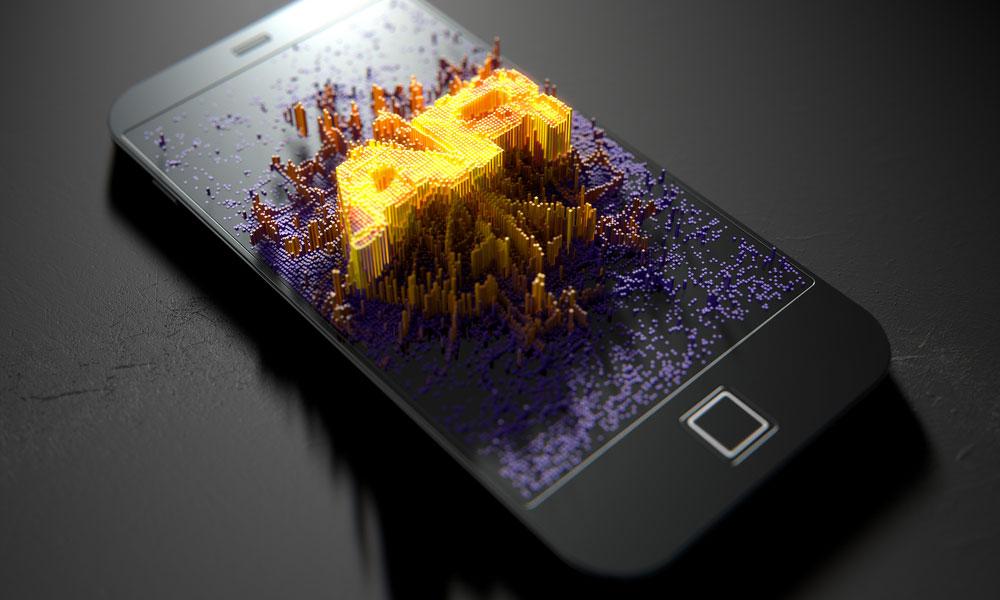Data is growing explosively, in proportions that are mind-boggling. One of the most popular phrases associated with data has been data begets data’; however this phrase is nowhere close to even representing the pace with which data is generated and shared among the 24 billion devices that will be connected in the world by 2020. This data about data is just part of the narrative. The challenge in the digital era is the need for the data to be interpreted for effective usage.
Augmented reality as an immersive computing technology is one among the disruptors that are overtaking conventional computing and outputs. While AR as a standalone technology offers its own set of solutions, it is now increasingly being used to work in tandem with other technologies to leverage and complement the technological capability of the other. Big Data and AR now work seamlessly together to deliver greater value. The biggest demand for AR is obviously related to applications that involve some form of visualization. Consequently, the demand is high in applications such as video entertainment, gaming activities, retailing, marketing and events.
Augmented reality applications thrive on data and it’s the data that feeds AR applications with information about surroundings and other geospatial, environmental information. Popular games such as Pok”mon GO are the best example yet of how AR feeds on location-based information to offer a highly interactive and immersive gaming experience. This is possible because of the quick availability of data. Big Data is clearly a game changer here since AR as a technology will have little impact without data. Similarly, AR as a technology adds value to the source of Big Data. While the growth of data has many applications, the manner in which the applications exploit and use the data is the real success story. And this is exactly where AR and Big Data complement each other.
Visualization transforming data into dimensions that offer an easy interpretation
The early bar graphs and pie charts were regarded as tools to help users identify and discern patterns through a simple visualization. Big Data now offers hundreds of data points and different analytical insights into a single source of data. For instance, sales figures now offer insights that were unheard of before peak sales, factors that affect sales, expectations, choice of colors, price points, locations, buying preferences, spending ability the list is near endless. The information is now available after having been captured and collated on a real-time basis from multiple sources and hundreds of locations.
The problem lies in getting all the information into some coherent and easily discernible display. Bar graphs and pie charts and other two dimensional models of displays were useful when the inputs and information were limited. However, with the availability of multiple data points, and the need to read through all of them at high speed makes it impossible for 2D models to offer actionable insights. This is where augmented reality app development has lent itself as a powerful tool to turn the data into an invaluable asset. By overlaying an extra layer of AR to the data that is being streamed, it is possible for stakeholders to get insights at a glance without having to turn into research scholars to make sense out of the data.
Making use of the physical context to create immersive technology
AR makes use of data by corresponding to the physical context explicitly. This is how big data contributes to the ability of AR by bringing data and reality together. The usage of data to create applications that meet specific requirements demands the presentation of the data in a particular manner, either inside the processes or as a part of the output. Only when data is presented in a particular manner can it be of use for the processes and the output. AR is effective only when the reality is augmented. In other words, reality needs to be captured and used in a manner that will augment it. Data is of utmost importance here. Data offers AR applications, continuous information that is necessary for capturing the physical context which can then be used to maximum effect.
Conclusion – The power of visuals in a sea of data
Nothing is more powerful than visualization, especially in the context of a world that is overloaded with data everywhere. AR permits visualization of data in a manner that is easy to understand. And perhaps the best part of AR is the interactive nature of the visualization. The canvas is different and exciting, and this is what makes AR a disruptive innovation that will slowly become the new standard for visualization. Across most areas of activity, the power of visuals is slowly gaining ground as the standard of the future. Explainer videos are replacing lengthy descriptive textual content. Shopping catalogues come with AR applications, permitting prospective buyers to check out furniture in their homes before making a purchase.
Augmented Reality, Virtual Reality and Mixed Reality are changing the whole definition of games and gaming arcades, transforming living spaces, public transport and public spaces into augmented, mixed and virtual battlegrounds. This exciting technology has been used in critical applications and in entertainment with maximum impact. However, for AR to succeed as a technology, it needs inputs that are fast and from as many sources as possible for reality to be augmented. And this is where Big Data makes the biggest contribution, to augmented reality, and the visuals generated by AR.
